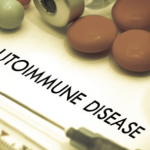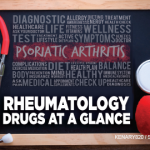Introduction & Objectives
Patients with rheumatoid arthritis (RA) experience a greater number of infections than the general population. These infections are frequent and contribute to substantial morbidity and mortality. Susceptibility to infection is related to a combination of disease-related immunologic dysfunction, immunocompromising comorbidities and the use of immunomodulatory drugs. It is also determined by patient lifestyle and other factors.
Nonserious infections, defined as events managed outside a hospital admission, have been reported in 20–30% of patients with RA each year and are the most common adverse events in large clinical trials. In elderly patients with RA, nonserious infection rates are estimated at 47.5 per 100 patient-years. Although these events are not life-threatening, their burden is high and recurrent nonserious infections may lead to variable periods of treatment discontinuation. Meta-analyses of data on immune-mediated inflammatory diseases have suggested differences in the risk of nonserious infections between tumor necrosis factor inhibitor agents, but the impact of other bDMARDs and the predictors of such risk are less well understood.
Bechman et al. set out to describe the frequency and predictors of nonserious infections and compare incidence rates across bDMARDs within the British Society for Rheumatology Biologics Register for Rheumatoid Arthritis (BSRBR-RA).
Methods
The BSRBR-RA is a prospective observational cohort study. A nonserious infection was defined as one that did not require hospitalization or intravenous therapy. Infections were captured from clinician questionnaires and patient diaries. Individuals were considered at risk from the date of initiation of biologic treatment for up to three years. Drug exposure was defined by agent: tumor necrosis factor (TNF) inhibitors, interleukin-6 (IL-6) inhibitors, B cell depletion agent (rituximab) or conventional synthetic disease-modifying anti-rheumatic drugs (csDMARDs) alone. A multiple-failure Cox model was used with multivariable adjustment. Missing data were addressed using multiple imputation.
Results
During the study period, 8,145 patients experienced 17,304 nonserious infections, with an event rate of 27.0 per person per year (95% confidence interval [95% CI] 26.6–27.4). Increasing age, female sex, comorbidity, glucocorticoid therapy, higher Disease Activity Score in 28 joints and higher Health Assessment Questionnaire disability index were associated with an increased risk of nonserious infection.
The data revealed a significant reduction in the risk of nonserious infection with csDMARDs compared with bDMARDs.
Compared with TNF inhibitors, IL-6 inhibition and rituximab were associated with a higher risk of nonserious infection (adjusted HR 1.45 [95% CI 1.29–1.63] and adjusted HR 1.28 [95% CI 1.14–1.45], respectively), and the csDMARD cohort had a lower risk (adjusted HR 0.64 [95% CI 0.59–0.70]). Within the TNF inhibitor class, adalimumab was associated with a higher nonserious infection risk than etanercept (adjusted HR 1.11 [95% CI 1.05–1.17]).
Conclusion
Nonserious infections occur frequently in patients with RA, and predictors mirror those reported with serious infections. All bDMARDs are associated with a greater risk of nonserious infection, with differences observed between agents. Although unmeasured confounding must be considered, the magnitude of effect is large, and a relationship between nonserious infection and targeted immunomodulatory therapy likely exists.
Refer to the full study for all source material.
Excerpted and adapted from: Bechman K, Halai K, Yates M, et al. Nonserious infections in patients with rheumatoid arthritis: Results From the British Society for Rheumatology Biologics Register for Rheumatoid Arthritis. Arthritis Rheumatol. 2021 Oct;73(10).



